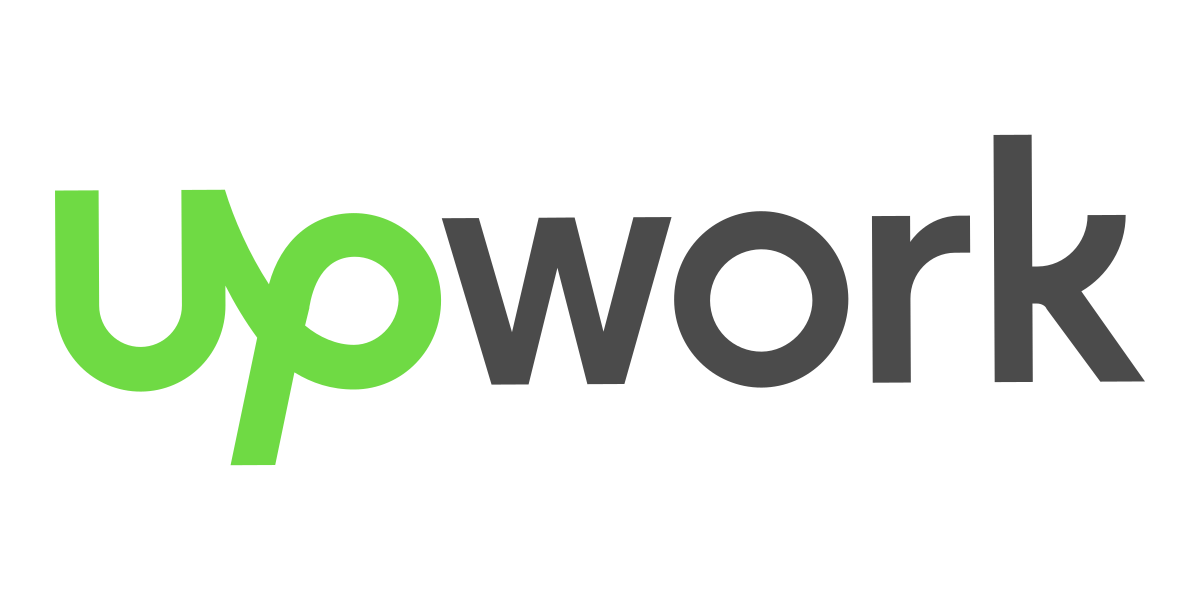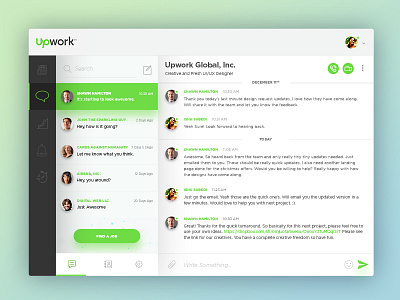What is Upwork?
Yep, you heard it right; How to earn money on Upwork. Upwork is a freelancing marketplace for professionals in industries such as writing, graphic design, and web development. The website assists professionals in finding assignments, communicating with clients, and being paid.
If you’re a new freelancer or working in a new industry, you may gain useful experience without having to pitch customers cold all the time. The site is flooded with new workers who are prepared to work for a lesser wage, which might have an influence on your earning potential.
Overall, Upwork makes it simpler to locate work and earn more money; but you need be careful about the assignments you apply for. Also, read our guide on handling money as a freelancer for tips on how to handle your newfound income whenever it arrives.
How to make money on Upwork
1. Create a detailed — and truthful — profile
For prospective employers, your profile performs the same role as a generic résumé. You won’t be able to find job until you have one.
Fill out the work type you want to accomplish, as well as the precise areas in which you are knowledgeable and your degree of knowledge. Because this is all self-reported information, please be truthful. If you are hired for work that you are unable to complete, your account may be placed on hold or cancelled.
Following that, provide a headshot and a brief explanation of your experience. Links to a portfolio or particular work examples might be included.
You can also enter the number of hours you can work each week, your ideal location, and your chosen rate. If you’re not sure what to charge, look at the prices of other freelancers with comparable experience on Upwork.
Upwork will typically approve your profile within 24 hours, assuming your profile is verifiable and accurate. Then you can get working.
2. Select a membership plan
Before getting to know how to earn money on Upwork you should know about its membership; For freelancers, Upwork has two membership plans: Basic and Plus.
The basic plan is free, but you will have to pay to interact with potential clients. Freelancers on the basic plan pay $0.15 per “Connect,” the platform’s internal tokens used to submit proposals to clients. Each month, you can roll over up to 140 Connects.
If someone contacts you, you do not need to utilise any Connects. The more complete your profile seems, the more probable it is that you will obtain employment offers from potential clients. Putting your greatest work on display or emphasising specialised experience might help you stand out.
Volunteer experience is also valuable if you are new to your field. Payment protection for hourly and project-based payments is also included in the basic plan.
The plus plan costs $14.99 a month and includes everything in the basic plan, as well as the following:
- Every month, 70 Connects are made.
- Visibility into how much a rival has bid for a job.
- Option to keep earnings private.
- You can change the URL of your profile.
- Inactivity never causes a profile to be hidden.
3. Establish contact with (genuine) employers
Submit bids for jobs in your wheelhouse using your Connects. Proposals should contain an introductory letter, your proposed fee, and responses to the questions posed by the customer in the advertising. You may also give examples of any work you believe is relevant.
Before applying for a job, research the reputation of the possible employer. Start your investigation with the Better Business Bureau, Glassdoor, and a Google search for press coverage of the employer.
“Upwork’s rating system helps you pick who you actually want to work with and allows others to determine whether or not to hire you.”
After the contract is completed, both parties rate each other in the same way as Uber or Lyft do. Employers are assessed on a five-star scale, and their ratings are shown on their individual pages. Your Job Success Score is a percentage displayed on your profile that shows how many gigs were completed to the client’s satisfaction based on ratings from your clients.
Even if everything appears to be on order, maintain communication and payments on the site. Clients will be held accountable for making unethical payment or work demands or making claims about your work without in-person proof if both parties document their actions.
4. Decide on a fee and go to work
Upwork deducts a percentage of your earnings. The fee structure is dependent on the total amount you charge with a customer over time, thus the longer you work with a customer, the less the cut takes. Upwork will most likely take the following steps:
- 20% off the first $500 you bill a client.
- 10% of total billings with a client ranging from $500.01 to $10,000.
- 5% on total billings with a client in excess of $10,000.
You can get paid in one of two ways: hourly or fixed price. Upwork’s fees are the same for both.
Your hourly rate on Upwork is the price before the service deduction. So if you list a rate of $20 per hour for your first gig, you can expect to earn $16 per hour after the 20% fee. Once you’ve billed $500 with that client, the fee drops to 10% and you would earn $18 per hour.
The same concept applies when negotiating a rate for a fixed-price task: if you’re paid $400 for a work, you’ll be paid $320 after the 20% cut. Once you’ve invoiced $500 to that client, the cost is reduced to 10%.
If you’re contacted for a low-paying job, don’t take it at face value. Negotiate a reasonable price with the consumer.
If you are approached for a job with a low pay rate for considerably more difficult labour, you do not have to take it at face value. Negotiate a reasonable price with the consumer.
- Hourly projects
All hourly projects get logged in your Work Diary, which is built into Upwork’s desktop app. With this function on, the app will keep a detailed record of your progress on a project. The app tracks your time in 10-minute billing cycles. It records keystrokes, scrolling, clicks and active windows. It also takes a screenshot periodically.
You may also switch off the Work Diary at any moment and track work manually, however activating the programme qualifies you for an Upwork feature called Hourly Protection. This service assures that you be paid for work that you can confirm you accomplished, even if a customer refuses to pay you.
- Fixed-price projects
Payment for fixed-price projects is less complicated. When you establish the agreement, the person or firm contracting you must set aside a specified amount of money. The employer must also establish milestones, which are specific deliverables along the road to the completed task. After you reach these milestones, you get paid a portion or all of your deposit, and the remaining is paid when everything is finished.
5. Get paid
Freelancers on Upwork may receive safe payments via PayPal, direct deposit, or wire transfer so you don't have to worry when you earn money on Upwork.
Your hourly tasks are all billed on a weekly basis. You will be paid 10 days after the billing period finishes, when you and the customer have reviewed the work. If a project is dropped before it is completed, Hourly Protection and milestones come in useful.
Fixed-price projects begin to pay off as agreed-upon milestones are met. If the customer fails to pay for a milestone or refuses to pay for what you believe to be finished work, you can file a dispute.


Comments
Post a Comment